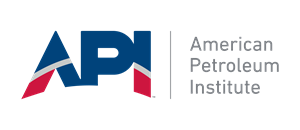API: The rising significance of First Edition Standards in the oil and gas industry
Since its founding more than a century ago, the American Petroleum Institute (API) has published more than 800 standards, comprehensive guides to enhance safety, efficiency and environmentally responsible industry practices. These standards have become the foundation of both operational excellence and regulatory compliance, shaping the way that oil and gas industry professionals work and innovate worldwide.
Building on this legacy, there is an increased need for new standards due to the dynamic nature of the sector – including the constant development of new equipment and technologies – and changing societal expectations. Keep in mind that, historically, most newly-published standards are revisions of earlier editions, modifications that ensure they remain relevant to current industry practices. By contrast, first-edition standards tread new ground, proactively responding to emerging industry needs.
As a result, API currently has 85 first-edition standards in development—roughly one-third of its active standards projects. These cover emerging topics and fields like repair and remanufacture, stakeholder engagement, and emerging technologies, such as hydrogen operations — to name just a few.
The case for standards. Of course, the relationship between innovation and standardization requires balance. While the oil and gas industry strives to adopt new technologies to be as competitive and cutting-edge as possible, it cannot do so at the expense of safety, efficiency and sustainability. Enter the need for standardization.
API’s expertise becomes invaluable here, with a standards development process that is both thorough and inclusive. Draft standards undergo extensive consultation and incorporate consensus building, ensuring a balance of diverse interests are represented throughout the process. This method encourages participation and promotes technical integrity. It’s a process accredited by the American National Standards Institute (ANSI) and has been applied to the development of all editions of API’s extensive range of standards. This includes the recently published standard addressing 3D printing, a critical need for offshore drilling, where remote operations present supply challenges.
Responding to this need, in 2021, API published Standard 20S, Additively Manufactured Metallic Components for Use in the Petroleum and Natural Gas Industries. This was followed in 2022 by the introduction of API Standard 20T, Additively Manufactured Polymer-Based Components. Both demonstrate a proactive approach to embracing 3D printing and its rapid evolution. The standards addressed quality assurance, safety, and compatibility in using 3D-printed components in critical oil and natural gas operations.
The case of 3D printing in offshore drilling exemplifies the crucial role of ongoing standardization. By proactively establishing guidelines for this emerging technology, API ensures its safe and responsible application, mitigating potential risks and fostering innovation.
Looking Ahead
With dozens of first-edition standards in the development stages, API’s upcoming publication forecast is comprehensive, highlighting its commitment to addressing diverse industry needs across downstream, midstream, upstream and natural gas segments. This plan underscores API's dedication to safety, environmental performance and its proactive approach in evolving to meet industry challenges.
At a time when the reliable availability of energy has become a global imperative, the importance of first-edition standards has become increasingly clear. More than just guidelines, they are critical to supporting an efficient, resilient and sustainable energy future while upholding public trust. API’s ambitious publication plan for first edition standards covers a wide range of industry interests, underscoring its foresight and adaptability in a rapidly changing world.



